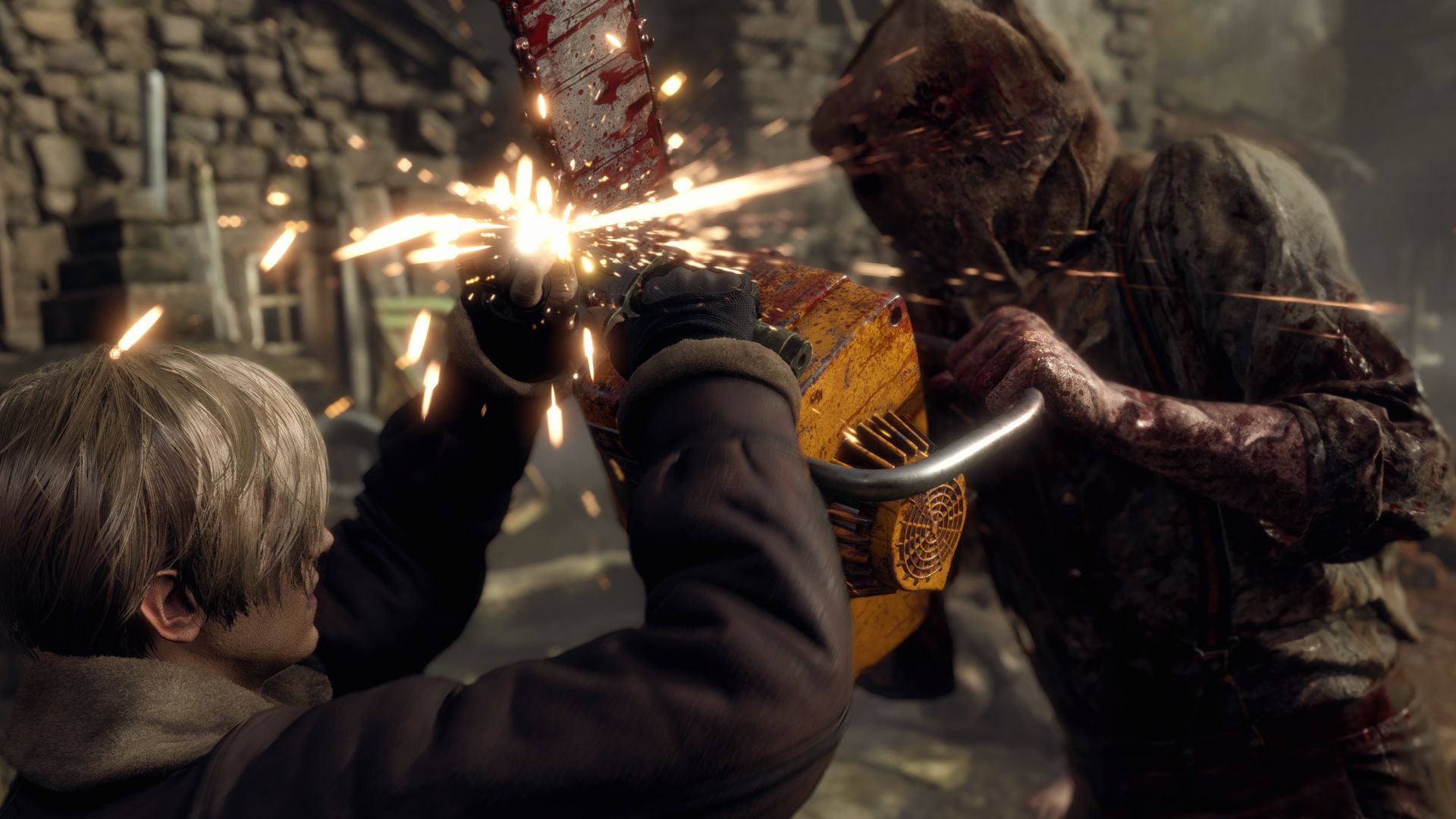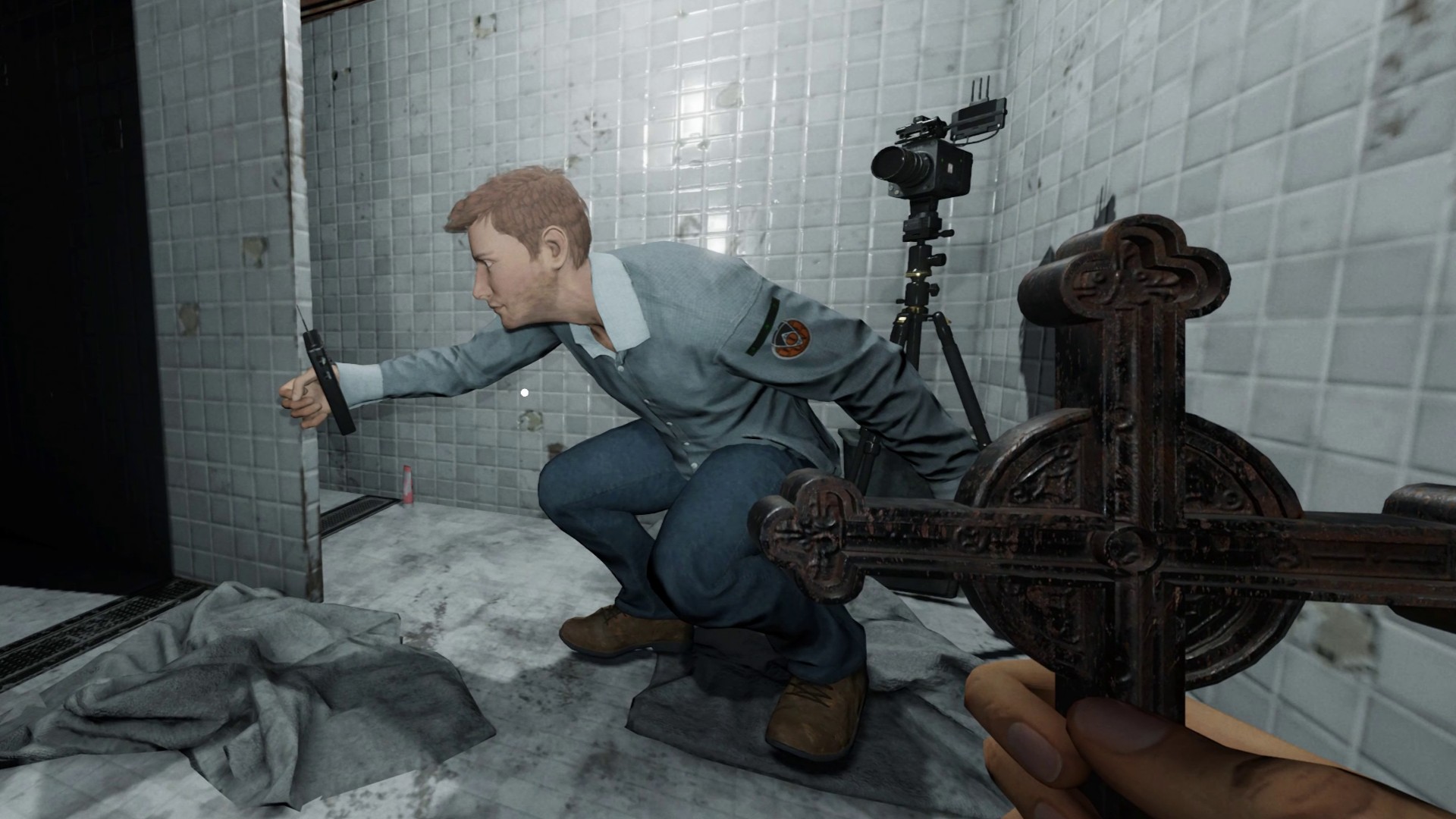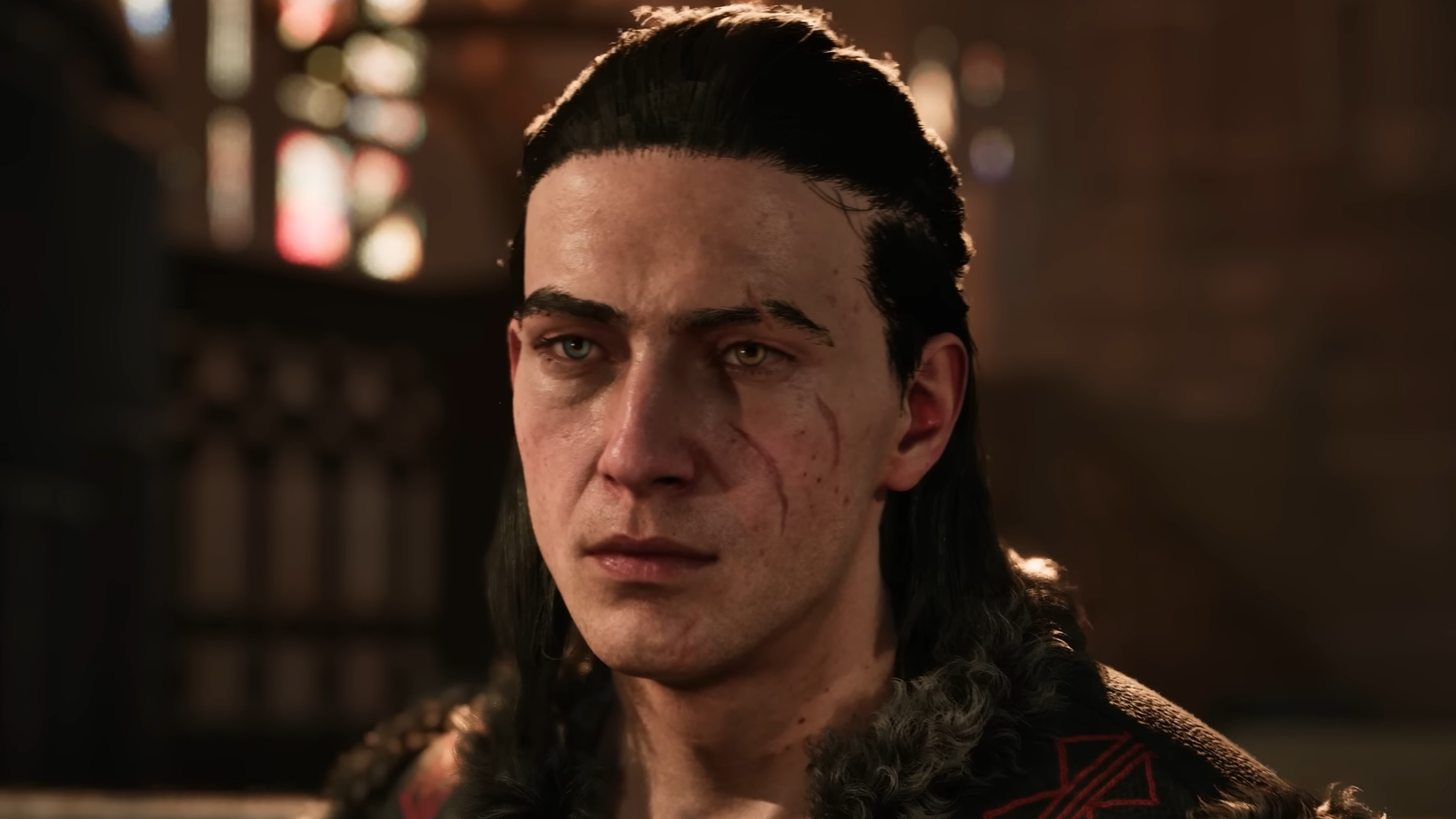
Capcom's remake makes me want a new game instead.
Resident Evil 4 is almost twenty years old, and god if that doesn’t make me want to crumble into dust. The prospect of a remake, on paper, isn’t that egregious given the timespan but the original is so widely available, so beloved and still perfectly playable in 2022 that the common question surrounding this remake has been: does it justify its existence? For newcomers, this will undoubtedly be one of 2023’s best action horror games. For those familiar with the original, this will be a neat trip down memory lane that suffers perhaps for staying too close to the original.
The main concern I saw from fans was that this would dump the one liners and camp in favour of a more self-serious story. Not that the recent remakes are strangers to quips—Resident Evil 3 remake is full of ’em—but if that was your fear then I’m happy to report that, despite a slight shift in tone, your cheesy dialogue is here, as dumb and entertaining as ever. “Where’s everyone going?” Leon utters, aloud, to nobody at all after nearly being stabbed and bludgeoned to death mere seconds earlier. “The bingo?” It highlights, though, the odd space this remake occupies. By not straying further from the original, it has less to entice returning players. Shouldn’t the point of a remake be to do something different, to take the premise in a bold new direction?
(Image credit: Capcom)
Which isn’t to say it has nothing to offer those returning. Far from it. This is a souped up version of the original with overhauled controls that allow for moving and shooting. Even Leon’s animations are different, portraying him a little more confident in light of the training he’s undergone between 1998 and 2004. He can even parry attacks now, something that is sure to improve certain enemy encounters later in the game. Unsurprisingly, the remake’s graphics are the most drastic change. Character models and environments have a level of detail that invites you to stare into the crazed expression of every blood thirsty villager you encounter. Leon’s jacket looks positively cosy. The colour palette too has become richer, more diverse.
I’d need more time with the game to decide how I feel about the overall look, but while it’s certainly an extremely handsome game in its own right, my initial impression was that I missed the sepia tone of the original’s decrepit woods and locales. Even the time of day is initially different, starting in a gloomy early morning twilight that doesn’t convey the same sense of barren forest. The remake has to sell the village’s decay in props and other cues, something it does well—but one glance at the washed out brown world of the original was enough to tell you everything.
Paint the town
Creeping up on the iconic central village location is—save for the graphics—almost exactly as you remember it. Bringing out your binoculars to scout out the location, you can see the villagers burning a pyre with one of the missing cops on it. Then it’s time to venture in, where one immediate difference is apparent: Leon can sneak now. Earlier in the demo I use stealth to avoid an enemy altogether. The village encourages more crouched creeping, and while it’s pretty simplistic, it allows me to take out a few villagers (mainly old nans) before things kick off. It feels like a tweak to the formula rather than a substantial addition. No matter how stealthy you are, sooner or later you’ll be faced with an entire village who want to run pitchforks through you. Cue blocking doors with bookcases, kicking ladders from windows… the idea of Leon as an outsider under siege is wholly intact. At this point the remake’s energised take is realised.
(Image credit: Capcom)
There’s a lot more villagers in the remake than in the original, and the village square is itself a bit larger, with more paths and areas to explore. Able to sprint and move while aiming, Leon handles more in the remake like how you feel, enabling panicked scrambling behind barns and over fences to stay out of reach of enemies. None of the gentle pacing of last year’s Resident Evil Village (itself littered with homage to 4) is here. There’s no blocking or guarding. Enemies will grapple and lodge their axes in Leon with ferocity, or even throw weapons, not hovering around to give the player a window of opportunity.
Aggressive speed breathes new life into the classic village set piece, a scene a good bit larger and more populated than in the original.
Neither do they lurch forward like the zombies of the recent remakes or shuffle at the pace of the original game’s villagers—here your foes will run and lunge at you, easily matching the mobility the remake’s controls afford Leon. Though for all his movement, he lacks Jill Valentine’s helpful dodge move, so evading enemies feels a lot more fraught than it did in 3. You do, however, have that parry, which opens enemies up to follow up attacks. The knife in the remake is no longer a weapon to be equipped, but a tool always at the ready, bound to a melee button for quicker use. But it does have a draining meter, so if you use it too much it will break and leave you a bit more defenceless. Leon is never truly helpless, though. You’ll still be able to roundhouse kick a whole group of enemies so long as you can stun one of them. Which was always really the magic of Resident Evil 4: finding creative ways to overcome seemingly impossible odds.
Spanish chainsaw massacre
This aggressive speed breathes new life into the classic village set piece, a scene a good bit larger and more populated than in the original. A ramped up pace makes every moment feel that bit more desperate and chaotic. Standing your ground never lasts long. Turning the tide means being a little lighter on your feet instead of lining up perfect shot after perfect shot.
(Image credit: Capcom)
It’s loaded with new dynamic moments, too. Like when the iconic chainsaw lad cuts down a balcony, blocking one of the paths around the village and depriving me of options. Or later, when he collapses a floor I happened to be standing on. You bet I absolutely squealed in surprise. You can even set a bull on fire, turning it into a raging battering ram, though if I’m honest I would rather spare the poor cow. If the remake can keep up this degree of complexity for the whole game, it will be something quite impressive to behold, and I’m already curious about how it’ll tackle other set pieces from the original.
Despite all this new vigour, the portion I played went through all the same moments as the original. Get besieged in the house, wait for Dr Salvador to show up with his chainsaw, survive until the bell tolls and the villagers are summoned away. Cue cheesy one liner. I’m not immune to the charm of nostalgia, and, look, Resident Evil 4 is still a great game—by extension, so is the remake. I just can’t shake the feeling that all this effort is a little bit wasted on something that, despite a couple of minor twists, I could recite by heart.
These remakes have pushed the series to an unrivalled level of polish and slickness, wielding its tools so expertly, that it feels a shame to throw that effort at a retread of a game fans will know inside out. For all the clever changes, and promises of greater divergences, I can’t shake how thrilling it would be if all this craft was brought to bear in a new instalment, one with its own voice and memorable moments. The Resident Evil 4 remake is going to be a riot for new players, realising a scope the original could only dream of while staying true to its vision. Yet I’d be a lot more excited were all of this applied to something new, something where I didn’t know each step on the path. Capcom have perfected their action design across these three remakes, I just wish it was truly let loose instead of chained to the past.



